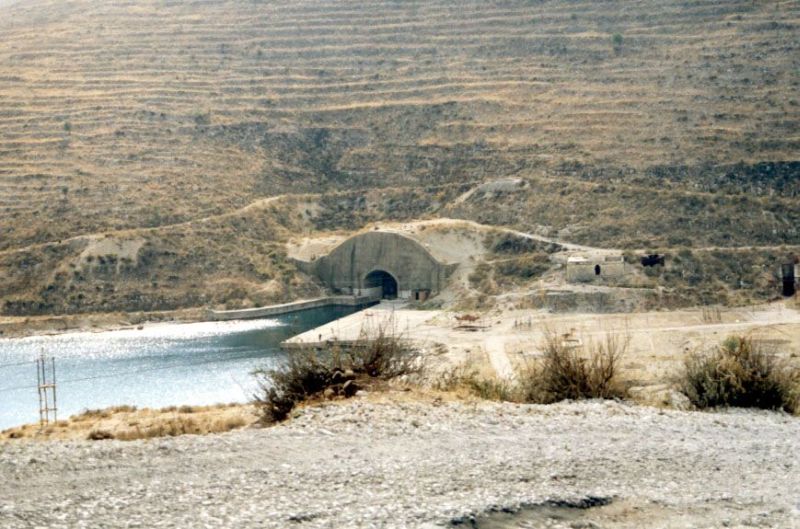

Construction started in winter 1941/42, many workers came from surrounding working camps and also prisoners-of-war and deported people from the east being not allowed to find shelter in bunkers during air-raids. The base was built without a dry pit, between the three quays a wooden construction was laid as a working platform. On the North-West-corner a two-storey anti-air-raid-tower with accommodation space was erected with walls of only 30 cm strength. There was no protection below the surface. The pen was situated right within the water with hanging steel gates on the harbour side. Therefore "Kilian" was the only base where two boats could be berthed one after the other. There were two boxes each with a length of 150 m, the berths within stretched over 138 m per side. The ceiling consisted of pre-stressed concrete-layers being in the end 4,8 m thick, the walls then had a strength of 3,3 m.

The U-boat-base Kilian in Kiel was designed as a shelter for new-built U-boats and such with little damages. Building ships can help with this food problem, as each ship will give the player a discount on their food each round (they count as trade routes which give the player more sources of food).The Kilian bunker in June, 1996 - photo by Tim. Players not planning ahead will soon find themselves with a shortage of food which will require taking loans from the Bank. The amount of food depends on the number of players it starts out low and steadily increases to high values towards the end of the game. At the end of each round, players must be able to give food to their workers. Points are earned by making money, building buildings and ships (which each have their own values), and selling goods. The winner is the player with the greatest net wealth at the end. The game is played for a set number of rounds. For example, a smokehouse building may be constructed in which players may process fish into smoked fish, which is more valuable. These goods are used either to feed the players' community, to construct buildings and ships, or are processed into finished goods. The gameplay takes place in the harbour of Le Havre, where players take goods such as fish and wood from the wharves. Ī two player version called Le Havre: The Inland Port was released in 2012. The game has a Metacritic rating of 82% based on 6 critic reviews. The game was adapted into an iOS app by Codito Development Inc.

It did not do as well as its predecessor Agricola in the Fairplay polls, with a rating of 2.51 (1 is best), but has a high rating of 7.9/10 at BoardGameGeek (a different rating system), ranking among the top 100 games and is generally considered to be highly regarded by critics. The game was released at Spiel 2008 in both German and Australian English, with both editions published by Lookout Games. The game was published by Lookout Games and distributed by Heidelberger Spieleverlag. Numerous credits are given to others who assisted with playtesting and other tasks. The illustrator was Klemens Franz while the English translator was Melissa Rogerson. The game was edited by Uwe Rosenberg and Hanno Girke and the former gets the main cover credit. It was inspired by the games Caylus and Agricola and was developed in December 2007. Le Havre is a board game about the development of the town of Le Havre. Economic management, resource management, Strategic thought


 0 kommentar(er)
0 kommentar(er)
